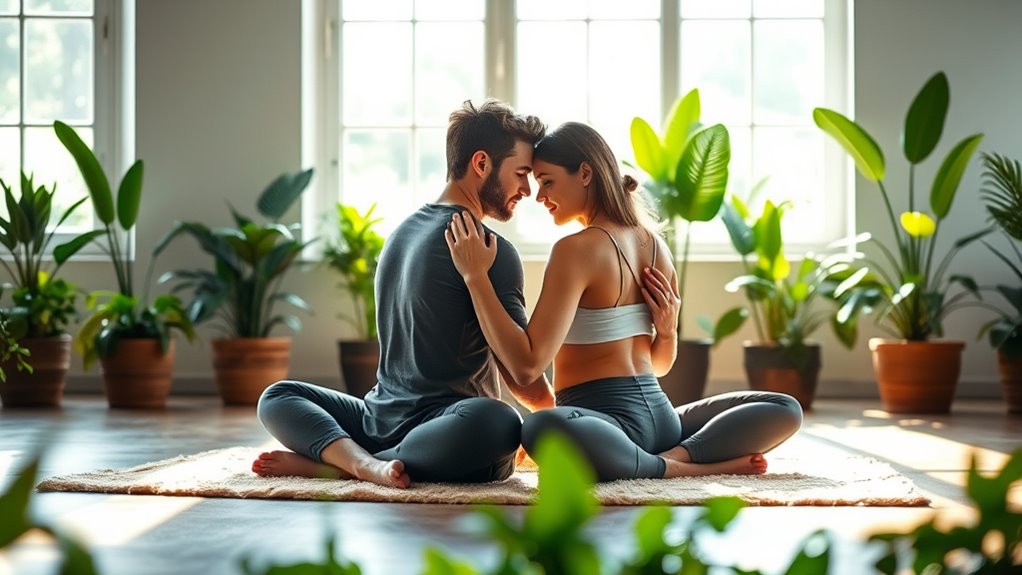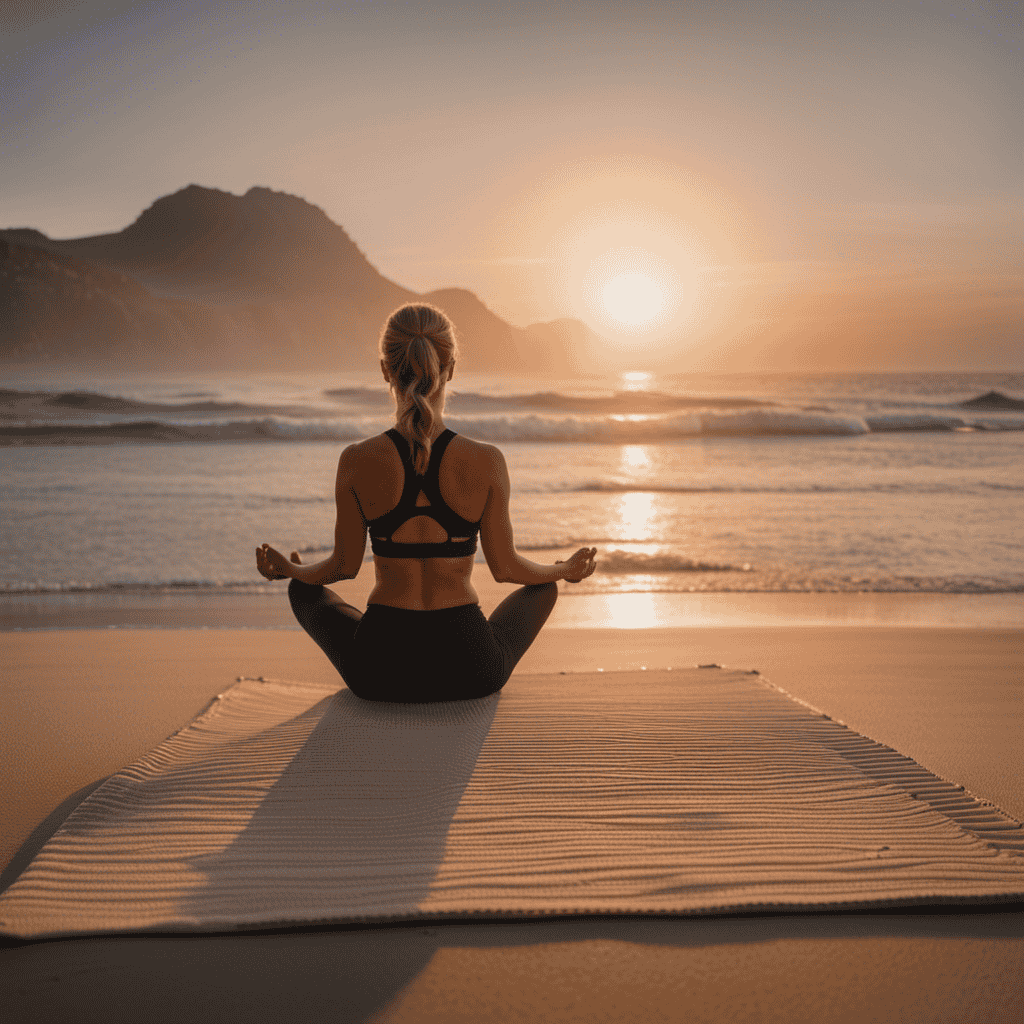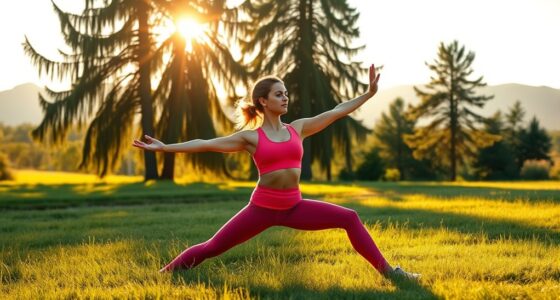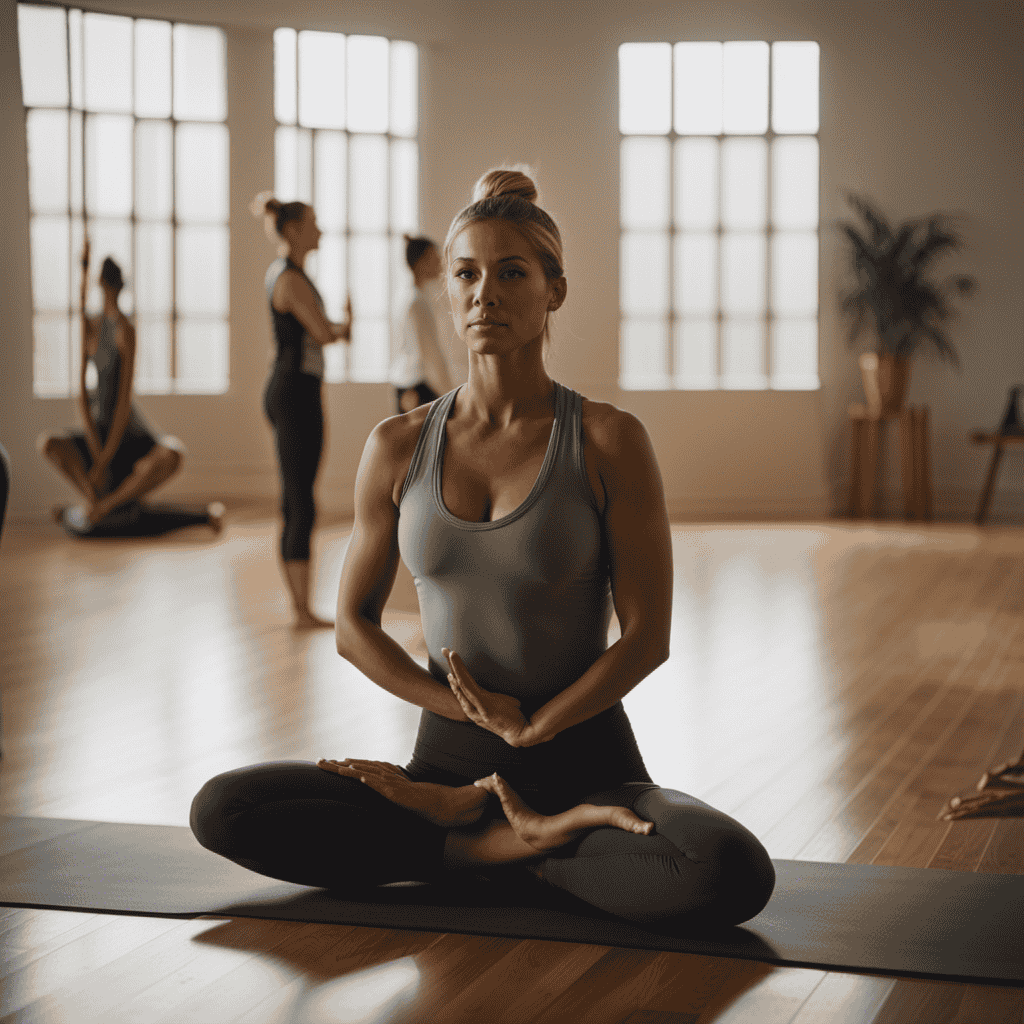Partner yoga is a powerful way to strengthen your connection and build trust with a partner. By practicing poses together, you develop physical strength, emotional closeness, and clear communication. Supporting each other through pose adjustments fosters trust and creates a safe space for vulnerability. As you work through challenges side by side, you’ll notice your bond deepening beyond the mat. Keep exploring to discover how these shared experiences can transform your relationship in meaningful ways.
Key Takeaways
- Partner yoga enhances emotional intimacy by fostering trust through supportive poses and shared physical experiences.
- Clear communication and active listening during practice strengthen understanding and connection between partners.
- Overcoming challenging poses together builds confidence and deepens mutual reliance and emotional bonds.
- Mindful awareness of body signals and breath increases empathy and emotional sensitivity.
- Consistent partner yoga practice cultivates vulnerability, safety, and long-term trust beyond the mat.
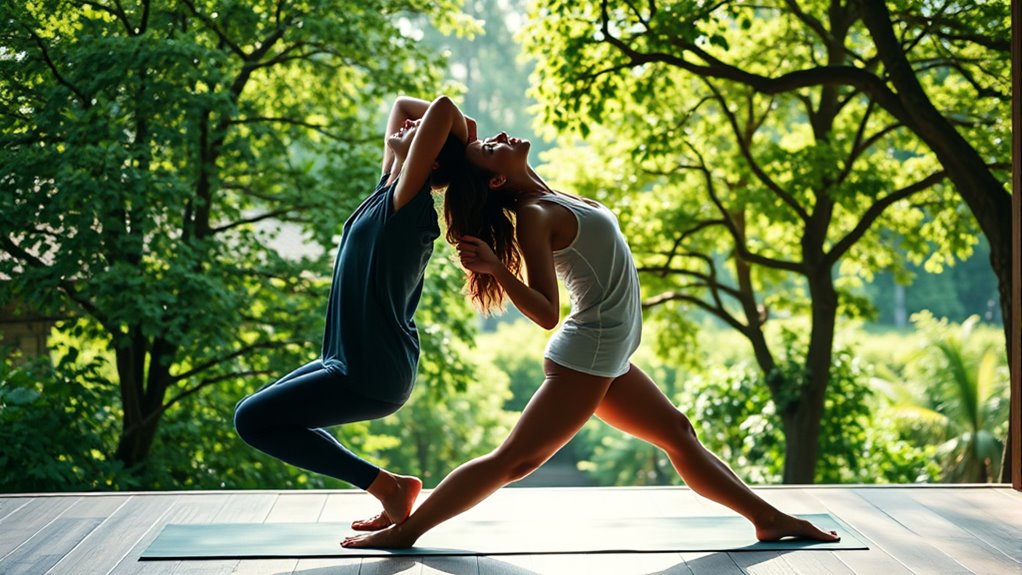
Partner yoga is a dynamic practice that enhances both physical strength and emotional connection between two people. When you practice together, you’re not just stretching or holding poses—you’re actively building trust and improving communication skills. This form of yoga encourages you to rely on your partner, fostering a sense of safety and mutual understanding. As you move through poses, you’ll learn to listen more attentively, express your needs clearly, and respond with sensitivity. These skills translate beyond the mat, strengthening your relationship in everyday situations.
Partner yoga cultivates trust, improves communication, and deepens emotional connection through shared movement and mutual support.
Trust building is at the core of partner yoga. You need to feel confident that your partner will support you physically and emotionally. When you trust your partner to hold a pose or stabilize your balance, it deepens your sense of security. This trust isn’t built overnight; it develops as you consistently show up for each other during practice. The more you rely on each other, the stronger your bond becomes. This trust also encourages vulnerability, allowing you to let go of fears or doubts and fully engage in the experience. As you learn to surrender and depend on each other’s stability, you cultivate confidence that extends beyond yoga sessions.
Communication skills are equally crucial in partner yoga. Since many poses require coordination, you’ll need to give clear, concise instructions and listen carefully to your partner’s cues. Effective communication minimizes misunderstandings and ensures both of you feel comfortable and safe. You might need to adjust your movements, change the pose, or offer words of encouragement. Practicing this dialogue helps you become more mindful of how you convey your intentions and interpret others’ needs. It also teaches patience and attentiveness, important qualities for nurturing trust. When both partners openly share feedback and express appreciation, it creates a more connected and supportive practice environment.
Additionally, understanding the influence of currency fluctuations on investments can help you make more informed decisions when managing shared resources or planning for the future. As you progress, you’ll notice that trust and communication naturally strengthen. You’ll become more attuned to subtle signals—like a slight shift in body tension or a breath pattern—that indicate whether your partner is comfortable or needs assistance. This heightened awareness fosters empathy and deepens your emotional connection. The shared experience of overcoming challenges and achieving poses together boosts your confidence in each other. Ultimately, partner yoga isn’t just about physical postures; it’s a journey of mutual trust, clear communication, and genuine connection that can enrich your relationship long after you step off the mat.
Frequently Asked Questions
Can Partner Yoga Help Improve Communication Skills?
Yes, partner yoga can help improve your communication skills. It encourages you to pay attention to non-verbal cues like body language and facial expressions, which enhances emotional awareness. As you work together in poses, you learn to listen more closely and respond thoughtfully. This active engagement fosters trust and openness, making it easier to communicate both on and off the mat.
Is Partner Yoga Suitable for All Fitness Levels?
Absolutely, partner yoga is as adaptable as a chameleon on a rainbow—perfectly suited for all fitness levels. Whether you’re a newbie who can barely touch your toes or a seasoned yogi looking for a new challenge, there are plenty of beginner-friendly options that won’t make you feel like a fish out of water. So, grab a partner and plunge into a practice that welcomes everyone, no matter your fitness adaptability!
How Do I Choose the Right Partner for Yoga?
You should choose a partner who you trust and feel comfortable with, as trust building is key. Look for someone whose energy and flexibility match yours, ensuring compatibility assessment is positive. Open communication helps identify shared goals and boundaries, making your practice safer and more enjoyable. Ultimately, pick someone who encourages connection, supports your growth, and makes the experience feel natural and rewarding.
Are There Safety Precautions for Partner Yoga Poses?
Think of partner yoga as building a bridge; safety is your sturdy foundation. Always use safety gear like mats and props to prevent slips. Communicate openly with your partner, listening carefully to avoid injury. Warm up thoroughly and don’t push beyond your limits. Injury prevention depends on paying attention and respecting each other’s boundaries, ensuring your shared journey stays smooth and safe, like a well-crafted bridge that holds strong.
Can Partner Yoga Assist With Emotional Healing?
Yes, partner yoga can assist with emotional healing by fostering trust building and encouraging emotional release. When you practice together, you create a safe space that helps you open up and express feelings you might usually suppress. The physical connection and synchronized breathing help release tension, reduce stress, and promote emotional clarity. Over time, these shared experiences strengthen your bond, making it easier to navigate emotional challenges both on and off the mat.
Conclusion
As you and your partner flow through each pose, imagine yourselves as two trees rooted side by side, their branches intertwined and strong. With every breath and gentle touch, you build a bond rooted in trust and connection. Feel the warmth of shared energy, like sunlight filtering through leaves. Remember, this practice isn’t just about poses—it’s about creating a safe space where your spirits can sway together, growing closer with every movement.
